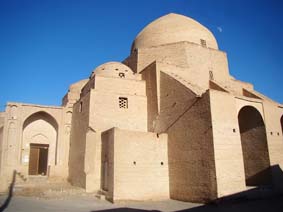Esfahan
Esfahan, Isfahan or ancient Aspadana has been the capital of the province of
Esfahan since 900 years.
The city is located on a high at the foot of the Zagros Mountains.
The average elevation of the Province is 1,475 m and that of the city 1,570 m
above sea level.
The present population of the province is 1,475 m and that of the city 1,570
m above sea level.
The present population of the province amounts to 3,774,204 (1992 census).
City of Esfahan itself has a population of 1,159,102 (1992 census).
Although there is extreme heat and cold, the cold does not last longer than
three months. It snows in winter, but rarely. Rain usually falls in March and
April, probably because of vapor from melting snow.
A noteworthy town in Sassanian times, Esfahan passed to the Arabs in the
mid-7th century and served as a provincial capital.
In the 11th century it was captured by the Seljuk Turks, who made it (1051)
the capital of their empire.
In the early 13th century Esfahan was taken by the Mongols. Tamerlane
conquered the city in 1388 and, after its inhabitants rebelled, slaughtered
nearly 70,000 persons in revenge.
Esfahan, chosen and designed capital under Shah Abbas I (1598_, was
reconstituted with so many new mosques, fine palaces, and bridges (masterpieces
of world architecture), avenues and parks that even European travelers wrote
rapturously of its beauties. At its zenith, under the Safavid dynasty in the
17th century, Esfahan had a population of about 600,000, making it one of the
world's great cities of the time.
However, the city declined rapidly it was captured (1723) by the Afghans, who
massacred most of its inhabitants. Russian troops occupied Esfahan in 1916.
In addition to being one of the finest art cities of the world and rich in
history, Esfahan is also one of Iran's largest industrial, agricultural, and
handicrafts production centers.
The Zealander Rud river watering gardens and fields with its numerous
tributaries along its 360-km course, flows from west to east through the city,
and divides off New Jolfa and some other suburbs from the main part of the city,
but most of the main attractions are to the north of the river.
Esfahan has been an exceptionally attractive city for the tourists from all
over the world. The excellent upkeep of its famous monuments contributes to its
continued significance and popularity among visitors.
Abundance of water and fertile soil has given Esfahan many cereals and bean
products and much fruit, such as melons, apples, and pomegranates. The almond
and cherry orchards of Najafabad (in the suburbs of Esfahan) well repay a visit
in early spring.
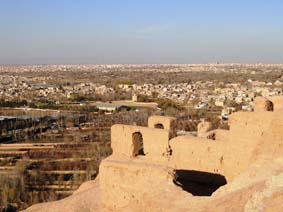
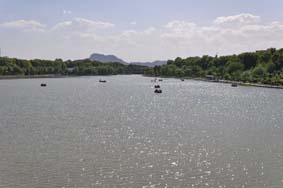
zayande rood
Sights to See
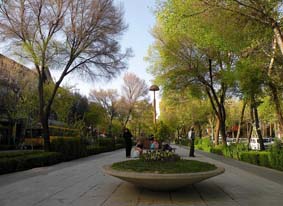
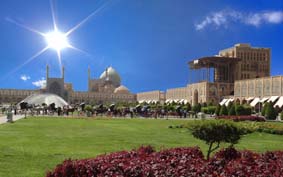
-
Imam Mosque
The mosque begun in 1612 during the reign of Shah Abbas I and, despite the
Shah's impatience, under construction until 1638, represents the culmination
of a thousand years of mosque building and a magnificent
example of architecture, stone carving, and tile work in Iran, with a
majesty and splendor that places it among the world greatest buildings.
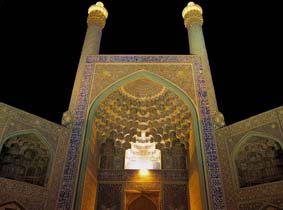
-
Sheikh Lotfollah Mosque
A masterpiece of architecture and tile work, this small mosque (began in
1602 and completed in 1619, taking a total of 18 years) on the eastern side
of Imam square, was built by Shah Abbas in honor of the great Lebanese
Sheikh Lotfollah, who was a sort of Islamic Billy Graham of his time.
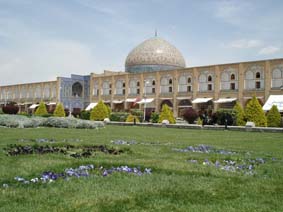
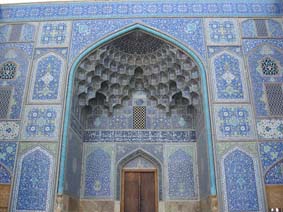
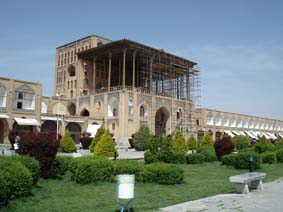
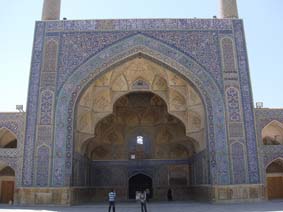
-
Chehel Sutun Palace
The Chehel Sutun Palace, inside a garden with an area of 67,000 square
meters, was built as an official court and a reception hall by Shah Abbas II
(1647 AD).
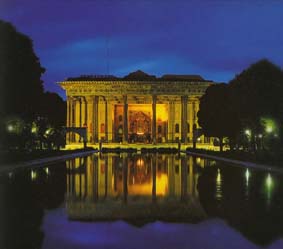
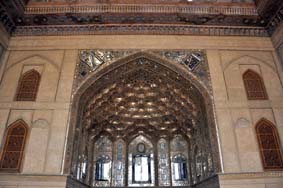
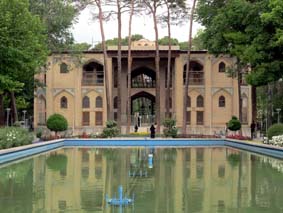
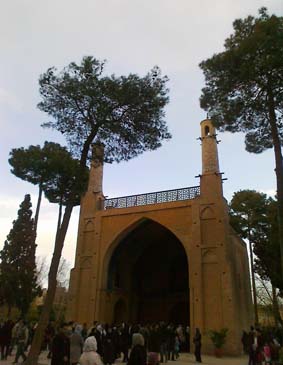
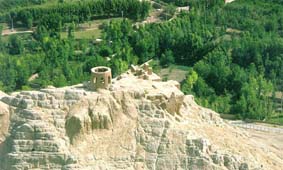
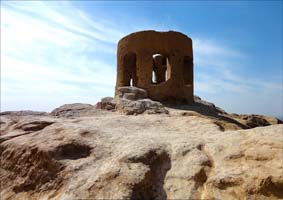
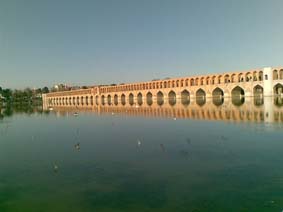
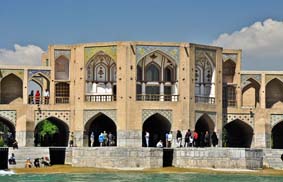
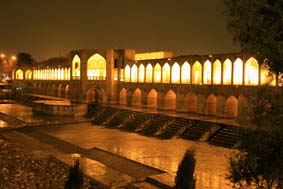
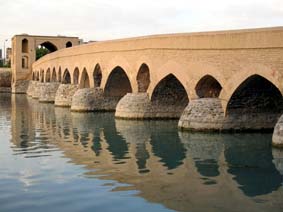
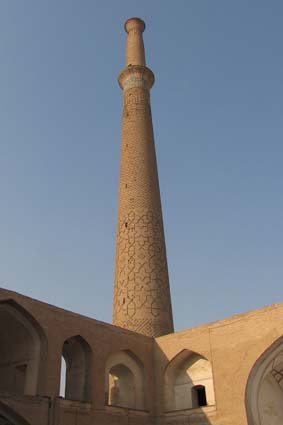
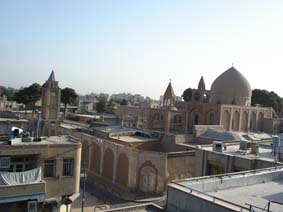
-
Vank Cathedral
The beautiful All Savior's Cathedral in New Jolfa begun in 1606, at the time
of arrival of Armenian immigrants to Esfahan, it was completed between 1655
and 1664 under the supervision of Archbishop David.
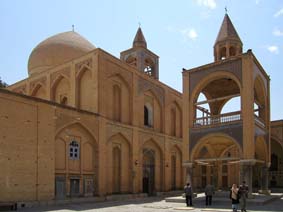
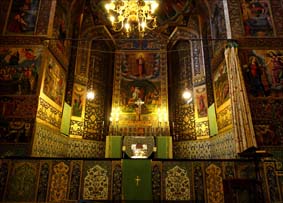
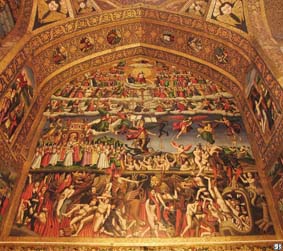
Excursions around Esfahan
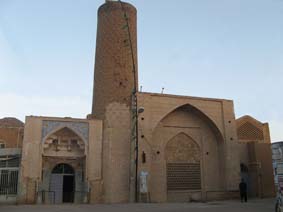
-
Mausoleum of Pir-Bakran
Located in Pir-Bakran 30 km to the southwest of Esfahan, the tomb of
Pir-Bakran, together with a gallery and courtyard date back to the 14th
century AD, and have been constructed in the reign of Mongol Ilkhan Oljaitu.
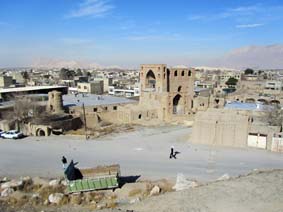
-
Jam`e Mosque of Na`in
As a famous historic monument of Iran and also known as the Alavian mosque,
the Jam`e Mosque of Na`in is a construction of the 10th century AD.
Architecturally, the crescent-like arches of the mosque bear close
resemblance to those of Tarikhaneh Mosque in Damghan and the Jam`e Mosque of
Nairiz in Fars province.
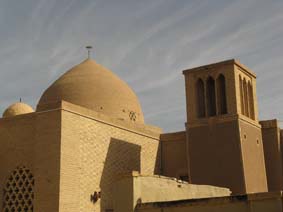
- Jam`e Mosque of Ardestan
This 12th Century AD Mosque with its exquisite plaster inscriptions is one
of the memorable monuments that remain from the Seljuk era.
